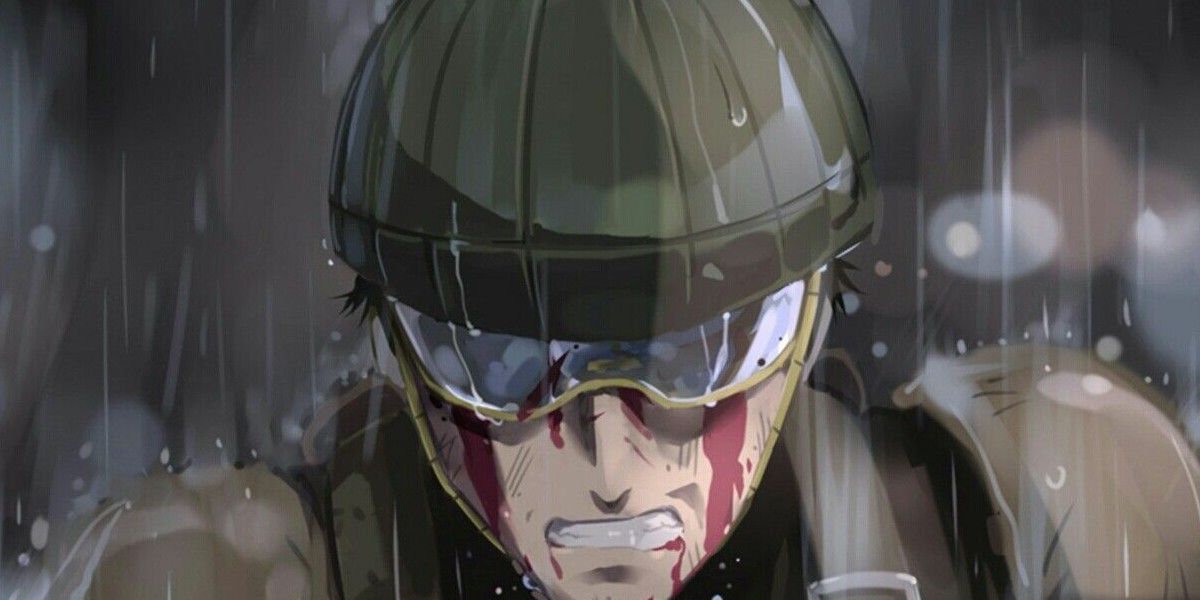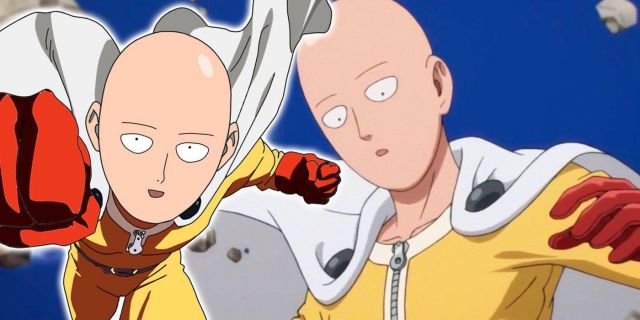One of the most common statements found online about One-Punch Man’s Saitama is that he is a gag character. This classification is often used to dismiss Saitama from any serious discussion, such as in debates on how Saitama compares to other battle characters such as Dragonball’s Goku or DC Comics’ Superman. Saitama’s primary character trait is his invincibility, and because he is a comedy character who beats all enemies in a single punch, many argue that there is no reason to include him in these “who would win” scenarios.
However, Saitama’s classification as a gag character goes against his actual status as the protagonist of a serious story. While One-Punch Man is undoubtedly a comedic manga with plenty of nonsensical moments, it also contains genuine character arcs and narrative developments not commonly found in other gag manga. To reduce Saitama to only a gag character is to shrug off the complexities found in both One-Punch Man and Saitama himself.
What Is a Gag Character?

A gag character can be defined as one whose primary purpose within a story is comedic effect. Common examples of gag characters are Bugs Bunny from Looney Tunes and Arale Norimaki from Dragon Ball. These characters often stretch the limits of reality for the sake of providing a laugh, whether it be being able to detach limbs to pick someone’s nose or to fall off a cliff and walk it off with just a bandage on their head. In Dragon Ball Super, Arale even beat Vegeta without breaking a sweat, much to the annoyance of the Prince of all Saiyans.
Gag characters are often found in non-serialized series, such as cartoons or gag manga. They, along with the stories they come from, rarely see any meaningful development or serve roles within a larger narrative. Gag characters exist solely to make the audience laugh.
One-Punch Man Takes Itself Seriously
While the current One-Punch Man manga certainly has its fair share of comedy, it is also a battle seinen story that takes itself seriously much of the time. The story spans multiple arcs filled with characters who have motivations and growth that go far beyond pure comedy. Despite its titular character being able to win all fights with ease, the majority of battles in One-Punch Man are based on previously established power scales and have real stakes behind them.
In its latest “Monster Association” arc, matchups such as Child Emperor vs. Phoenix Man and Tatsumaki’s battle with the esper-turned-monster Psykos are filled with tension because of the uncertainty of their outcome. The heroes struggle for their lives and win thanks to their own strength or intelligence rather than through gags. In addition to how seriously One-Punch Man takes its battles, the manga also is packed with emotional moments meant to evoke genuine feelings within its audience. When Mumen Rider takes on the Deep Sea King or when Suiryu gets broken down by Gouketsu, the reader feels pain and empathy for these characters because the story takes those moments seriously.
Saitama Is a Growing Character
Saitama is the center of much of One-Punch Man’s humor. Much of the early manga is devoted to setting up new threats more powerful than the last, only to have Saitama annihilate them in a single punch all the same. Saitama also has many nonsensical and contradictory feats, such as being able to fly through space with a single fart yet being unable to kill a single mosquito. His look is iconic and designed to elicit a laugh with its goofiness.
However, Saitama’s character extends beyond just his humor value. Saitama can be temperamental, kind, inspiring, lazy and self-serving. He dislikes new faces and has trouble making new friends. He has flaws and complexities within his personality that are not present in many other gag characters — and while Saitama has seemingly infinite strength, this also leads to his primary character motivation: finding purpose and fulfillment in his life. Saitama seeks out opponents who can give him a feeling of excitement, and he struggles to care about his surroundings because of how desensitized he is to feeling danger.
Saitama also finds himself growing and changing through the story. In One-Punch Man Chapter 166, Saitama finds himself arriving late to battle against Garou. He sees death and destruction all around him, his long-time disciple Genos decimated. Saitama’s reaction to this moment is played seriously; he feels regret and anger at his own limitations as a hero. Saitama has seen little change throughout the manga, but the seeds of his character arc are there. Saitama’s personal journey may be about coming to terms with his power and finding meaning in being a true hero for society, not just an unbeatable winner.
Limitless Power Isn’t Just for Comedy

Saitama’s infinite power does not just exist for the sake of comedy but has genuine explanations within the manga. In One-Punch Man Chapter 88, former villain Dr. Genus states that “no matter how much effort one puts in, every living being has an intrinsic limit to its growth.” He then theorizes that this limiter may be able to be broken under intense trials and tribulation, meaning an individual could theoretically exist with never-ending strength potential.
Saitama is an example of that theory come to life. His immeasurable strength, speed and durability are the product of him somehow being able to break through his limiter. While it is still unclear how Saitama was able to accomplish this feat and what the concept of limiters means for the story as a whole, the One-Punch Man manga does provide an explanation for Saitama’s abilities beyond their comedic effect.
One-Punch Man is a battle manga that asks, “what would an unbeatable character look like in a superhero world?” While this question does lead to plenty of comedic moments, One-Punch Man still addresses the serious side of that dilemma. Saitama struggles with his own purpose and limitations despite his seemingly infinite strength. Surrounding characters like Genos or Blizzard have personal motivations and tense, emotional moments that are taken seriously within the story. Saitama is not a gag character just because his power leads to humorous moments; he is a multifaceted character within a serious story that explores themes and questions unexplored in many other superhero narratives.
